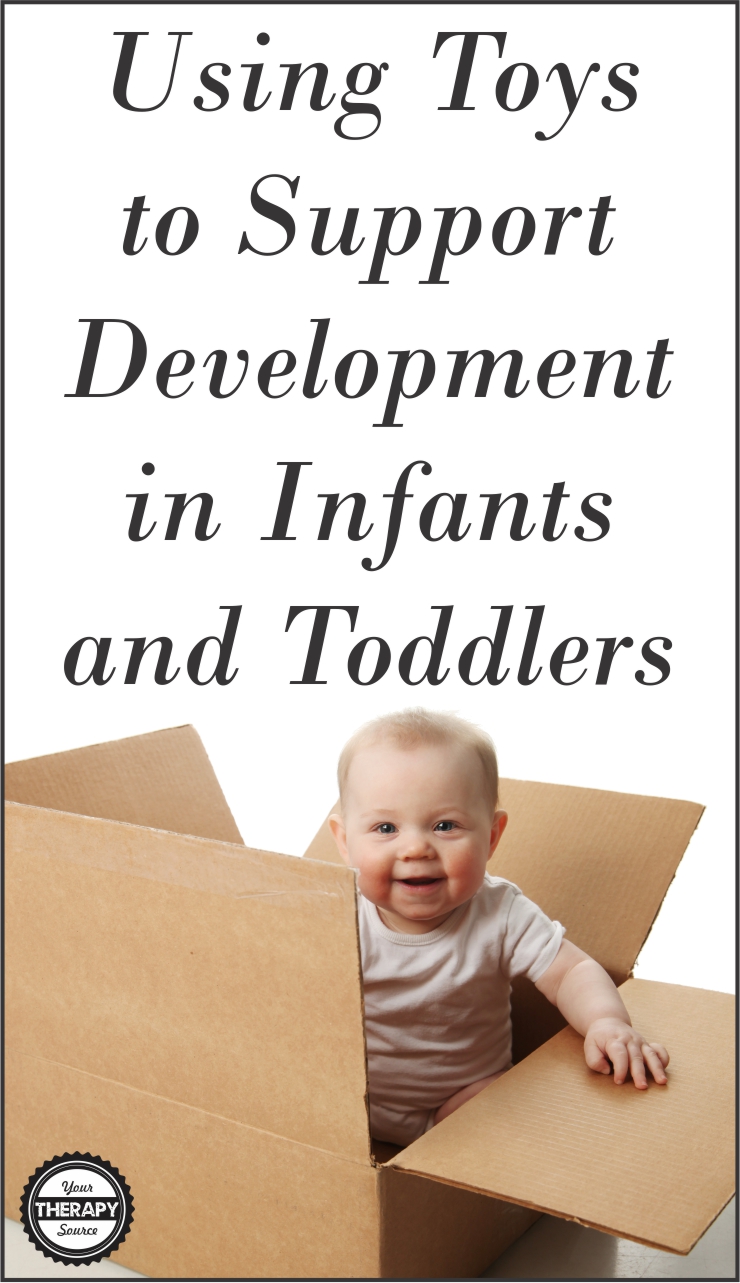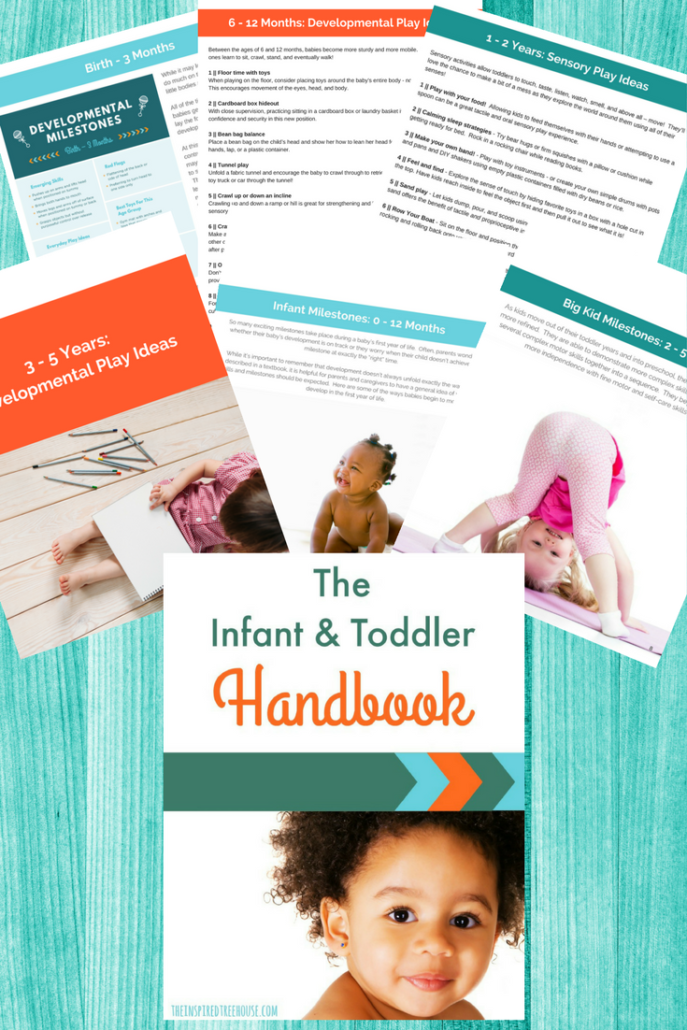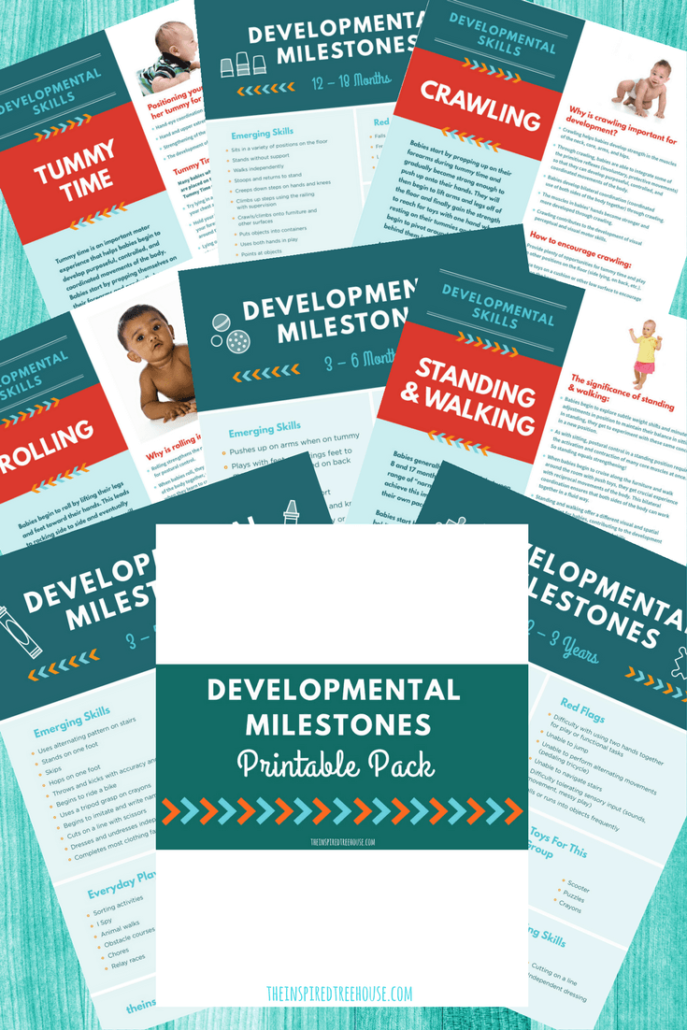Physical Development of Infants and Toddlers – Using Toys to Help
Most likely, at some point in time, parents worry about the physical development of infants and toddlers. Sometimes it is about wondering when their baby will roll over, sit up, crawl or walk. The infants then turn into quick-moving toddler. Parents begin to wonder when will they stop running and return to a sitting position again. Parenting is a constant, ever-changing journey based on a child’s development.
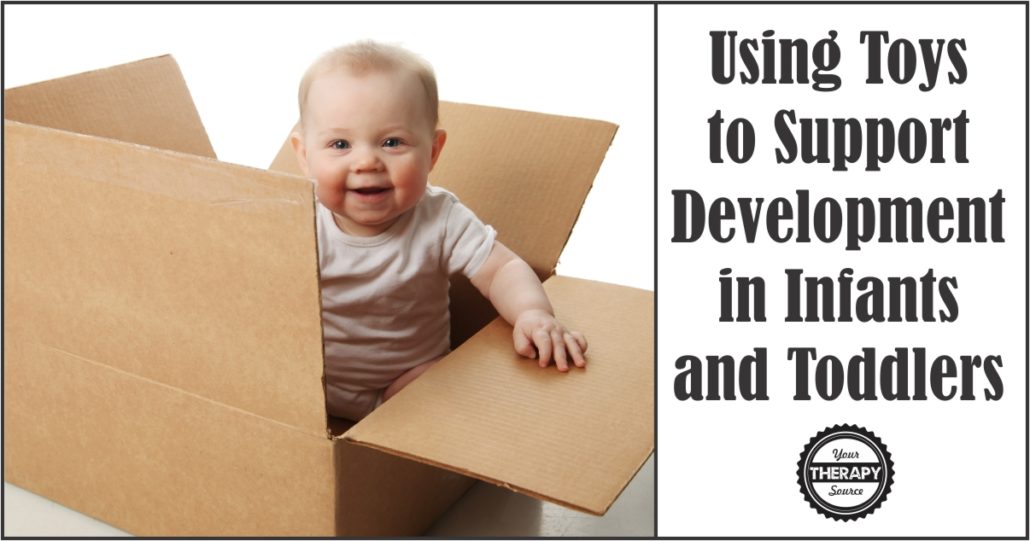
Many parents or primary caregivers ask questions about motor development and developmental milestones. Often times those questions are about how they can help their child’s development when it comes to fine motor skills, gross motor skills, and cognitive development.
One of the easiest ways to encourage the physical development of infants and toddlers is during playtime.
Using Toys to Help with the Physical Development of Infants and Toddlers
Have you ever observed a pediatric Occupational or Physical Therapist, work with an infant to prevent developmental delay? It is quite amazing to watch them interact and motivate physical activity in infants through the use of toys. Tummy time is an excellent example where pediatric therapists may help new parents during their baby’s first years of life. Sometimes for young infants, they may use colorful toys that make silly, loud noises. Other times, a parent’s facial expressions are all a baby needs to be motivated to react.
We need to remember that children’s brain development occurs physically, socially, and emotionally through play. And of course, children of all ages enjoy playing with toys. Providing the proper toy selection to support development in infants and toddlers can be a difficult first step especially for new parents, therapists, or teachers.
Keep in mind that all children develop at their own pace. If you have concerns about your child’s development in the first year of life and early childhood, contact your healthcare provider. Early intervention services can be extremely helpful for you and your child.
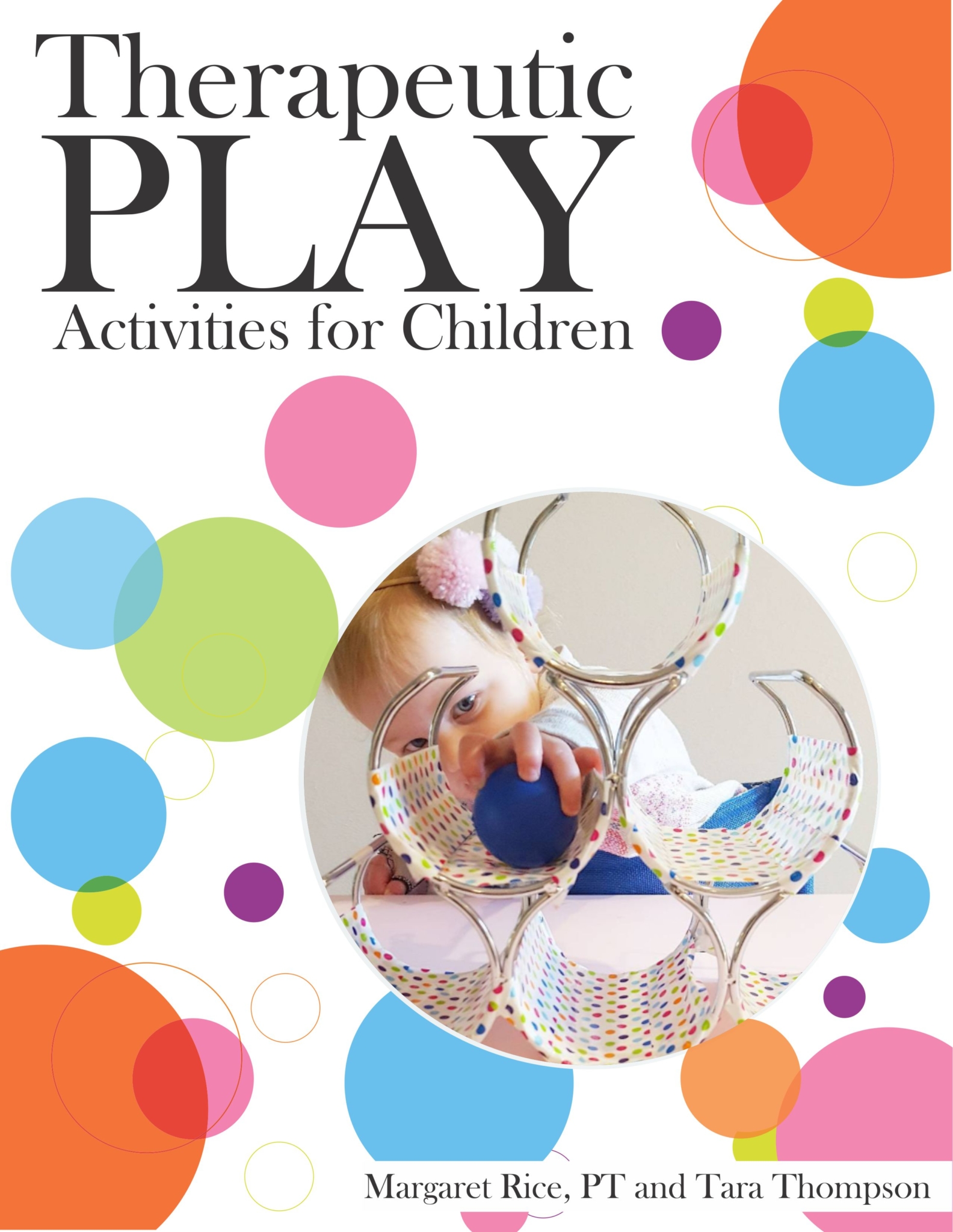
Therapeutic Play Activities for Children
General Questions to Ask about Toy Use and the Physical Development of Infants and Toddlers
Children will move through the developmental stages, at different rates in the first months of life, as they reach important milestones like rolling, sitting, walking, and running. It is important to ask yourself questions as you observe your children with toys in order to support healthy physical development.
Here are questions to help parents and caregivers make the right choices when it comes to using toys to support development in infants and toddlers.
- Is the child interested in the toy? The child must be motivated to actually use the toy.
- Can the child physically use the toy (adapted if necessary)? If the child can not independently or with minimal assistance use the toy the child may not be motivated to explore the toy.
- Is the toy appropriate for the child’s cognitive level?
- Is the play space at home or school appropriate for the toy? Children need open space to explore their environments.
As children develop, these are questions that should be asked over and over again during playtime to help learn about a child’s motivations, physical abilities, and cognitive development.
Toy Selection to Support Healthy Infant Development and Early Child Development
Select toys that encourage development within and across the domains of childhood development such as language, fine motor, gross motor, social, emotional development, and cognitive skills. This list of suggested toys is broad and supports the development of motor skills. It is not meant to be an exhaustive or specific brand name list.
Keep in mind that oftentimes, you have plenty of materials around your house that can be great for play in the early years. Be creative and use basic, household materials to stimulate play and encourage infant and toddler development across all domains. For example, use fabric scraps in many different ways. It can help develop a baby’s sense of touch. Wave it in the air to encourage the baby to move closer to explore it. Toss it to a toddler to begin working on hand-eye coordination. All of these activities help with the development of muscles, motor skills, and more!
In order to facilitate childhood development and healthy brain changes, toys selection should be intentional. Just like the example above with the fabric, select simple play materials for infants and toddlers to encourage cause and effect skills, sensory information, physical activity, vocabulary development, social development, visual motor skills, and more.
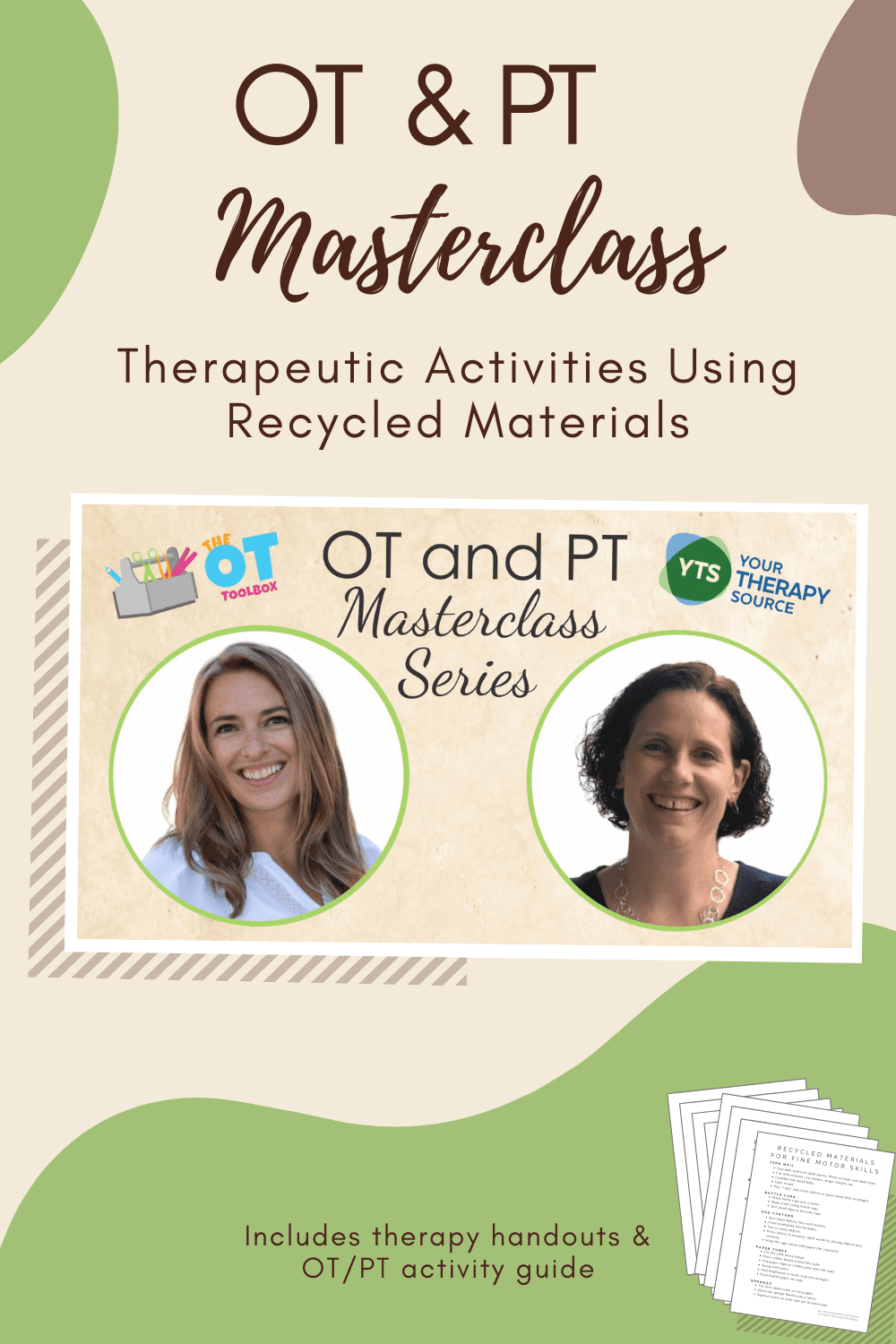
Therapeutic Activities Using Recycled Materials Masterclass
Super Easy Ideas to Start
Try some of the following ideas to start:
- Construction type toys – i.e shoe boxes, cereal boxes, fabric blocks, plastic blocks, wooden blocks, etc. Not only can children build with these objects but they are also great to run around, jump over, and create obstacle courses for active indoor play on rainy days.
- Open-ended toys – i.e. large cardboard boxes to explore, scraps of fabric to pull and touch, fabric for peek-a-boo games, pots, and pans, plastic “Tupperware” type containers, etc.
- Books – Board books are wonderful for little hands to explore. The American Academy of Pediatrics recommends that you read with your children starting at infancy.
- Puzzles – For young children, a puzzle can be trying to fit an object into a muffin tin, a ball into a basket or stuffed animals into shoeboxes. For older children, you can increase the difficulty by decreasing the size of the opening. To add in active play, move the “puzzle” pieces on one side of the room and the container on the other side of the room.
When parents, daycare providers, teachers, and therapists are informed about proper toy selection, play and developmental skills are stimulated across all domains.
More Helpful Resources on the Physical Development of Infants and Toddlers
If you need more information about infant and toddler development check out these great resources.
The Infant and Toddler Handbook, written by Lauren Drobnjak PT and Claire Heffron MS, OTR/L, is a 30-page downloadable ebook packed with reader-friendly information about the developmental motor milestones you can expect in kids ages 0 through 5.
The second half of the book is full of development-boosting fine motor, gross motor, and sensory activities divided by age range so you can find exactly what you’re looking for depending on the ages of the kids in your therapy practice, classroom, or home. Find out more.
Developmental Milestones Handout Pack, written by Lauren Drobnjak PT and Claire Heffron MS, OTR/L, is the ideal resource for sharing information about baby, toddler, and preschool development with parents and caregivers. Find out more.
Reference: Guyton, G. (2011). Using toys to support infant-toddler learning and development. YC Young Children, 66(5), 50.
